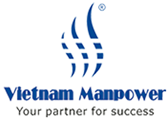What are Employee Resource Groups (ERGs)?
Employee resource groups (ERGs) are employee-led groups designed to support underrepresented employees, foster a sense of belonging, and create a strong community within organizations. These groups typically focus on shared common identities, demographics, or professional interests, such as LGBTQ+ employees, Latinx professionals, Black employees, Pacific Islanders, women, and caregivers.
ERGs play a key role in improving company culture, increasing employee engagement, and enhancing the overall employee experience. By bringing together individuals with shared backgrounds or interests, these groups provide a platform for networking, advocacy, and career development.
Additionally, ERGs align with broader DEI initiatives by helping organizations build a more inclusive and supportive work environment. Whether they focus on professional growth, cultural identity, or workplace advocacy, ERGs help create meaningful connections and drive positive change across organizations.
The 4 C’s of Employee Resource Groups
The four C’s of ERGs help organizations structure their ERGs to drive engagement and business success:
Community
ERGs foster a sense of community by bringing employees together around shared identities, interests, or experiences. They create a supportive environment where employees feel heard, valued, and connected.
These groups often become an emotional anchor for employees navigating challenging workplace dynamics, providing psychological safety that enables authentic self-expression and a greater sense of belonging.

Culture
ERGs contribute to company culture by promoting diversity, equity, and inclusion. They create spaces for open discussions, cultural awareness events, and programs that celebrate different backgrounds and perspectives.
These groups are often early warning systems for cultural issues, identifying problematic patterns or policies before they become widespread organizational problems.
Commerce
ERGs can support business goals by driving innovation, helping organizations understand diverse markets, and improving employee engagement and retention. Companies with strong ERG programs benefit from increased collaboration and stronger internal networks.
The market insights generated through ERG focus groups and feedback sessions can translate directly to product improvements and more authentic marketing approaches that resonate with diverse customer segments.
How to start ERGs in your organization?
Launching an ERG program requires careful planning, strong leadership, and organizational support. The process involves identifying key employee needs, securing leadership buy-in, and creating a structure that ensures long-term success. Below are the steps to start an ERG program:
1. Assess employee needs
Before launching any Employee Resource Group (ERG), it’s crucial to conduct a thorough assessment to identify which groups would provide the most value. Start by conducting anonymous surveys, asking specific questions about employee experiences, challenges faced by different demographic groups, and interest in potential ERG topics.
Hosting listening sessions is another effective method, where you can gather employees from diverse backgrounds to collect qualitative insights about workplace inclusion gaps that ERGs could address. Additionally, analyzing demographic data within your organization can help identify underrepresented groups that might benefit from additional support structures.
Finally, researching industry benchmarks will give you an understanding of which ERG types have been successful in similar organizations and the issues they’ve effectively addressed.
3. Define ERG goals and mission
Successful Employee Resource Groups (ERGs) have focused missions with measurable objectives. Crafting a specific mission statement is essential, addressing how the ERG will support both its members and the organization.
For example, an ERG might aim “to create a supportive community for working parents while developing solutions that help the company attract and retain parental talent.”
Setting specific annual goals is also crucial. These goals might include increasing membership by a certain percentage, developing a mentorship program with measurable outcomes, creating learning resources accessed by a target number of employees, or influencing specific policy changes with measurable impact.
It’s important to align these objectives with business outcomes, connecting ERG activities to talent acquisition, employee engagement scores, or market insights for specific customer segments. Developing concrete success metrics is vital as well, tracking and reporting these to leadership to demonstrate the ERG’s value and impact over time.
4. Recruit ERG leaders and members
Building the right leadership team is essential for sustainable Employee Resource Group (ERG) operations. Start by creating a formal leadership structure, defining roles beyond just “chair” and “co-chair” to include positions focused on communications, events, membership, metrics, and professional development.
Establishing term limits is also important, with one-to-two-year leadership terms to prevent burnout and create leadership development opportunities throughout the organization. Providing specialized leadership training is crucial, offering development specific to ERG management, including budget oversight, strategic planning, and stakeholder management.










Replies to This Discussion